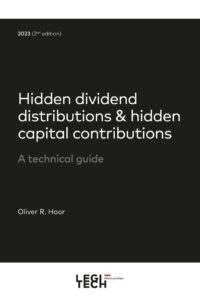Luxembourg companies have a legal personality that is separate from that of their shareholder(s). Consequently, they may enter into agreements with their shareholders as they do with third parties.
However, when the terms and conditions of those agreements do not adhere to the arm’s length standard, tax adjustments may be required in accordance with the concepts of hidden dividend distribution and hidden capital contribution. Both concepts aim at a separation of the sphere of the company (which is itself subject to corporate income tax on its worldwide income) from that of its shareholders.
As such, the concepts of hidden dividend distribution and hidden capital contribution are cornerstones of Luxembourg’s transfer pricing rules. In addition, in the context of associated enterprises (in a group of companies), tax adjustments might be required under Article 56 of the Luxembourg Income Tax Law (“LITL”).
Hence, a clear distinction must be made between agreements that adhere to the arm’s length principle and agreements that, motivated by the shareholding relationship, shift advantages from the company to the shareholder or vice versa. Therefore, each contractual relationship between a company and its shareholder(s) must be considered.
Luxembourg tax law does not provide for exhaustive definitions of hidden dividend distributions and hidden capital contributions. Both concepts have their origins in case law of the German Reich Tax Court (Reichsfinanzhof) and have been carefully extended and refined through the years by the German Federal Tax Court (Bundesfinanzhof). Since the publication of the first edition of this book back in 2011, the Luxembourg Courts had to decide in numerous cases involving both concepts.
This book offers a one-of-a-kind, practical insight into the tax treatment of hidden dividend distributions, hidden capital contributions and triangular cases. Charts, case studies and checklists aid the reader in identifying and assessing the various cases in which hidden dividend distributions and hidden capital contributions may arise. A new chapter with practical case studies considers situations that may occur in the context of multinational groups, Luxembourg alternative funds and individual shareholders.
Reading this thorough guide is indispensable for an in-depth understanding of the concepts of hidden dividend distribution and hidden capital contribution. Tax advisers, practitioners and tax students should gain substantially from the insights provided in this book.



